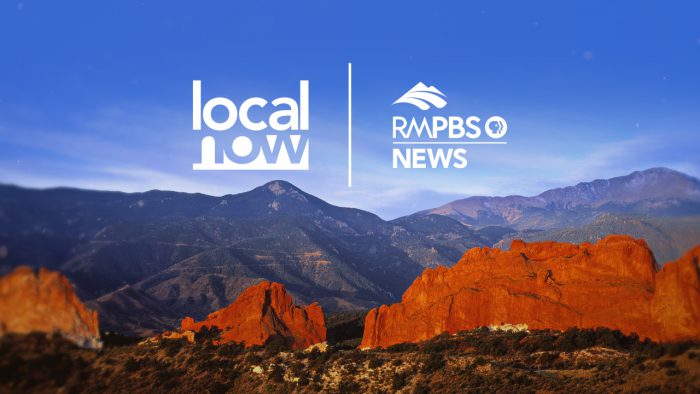
Rocky Mountain PBS has over the years built a stable of programming around investigative reporting and in-depth features, merging with a nonprofit investigative reporting outfit and a public radio station back in 2013. But for all its respectable news offerings, the public TV network — with stations in Denver, Colorado Springs, and Grand Junction — hasn’t had the bandwidth to give its million or so viewers across the state daily, local breaking news. On Tuesday, through a partnership with The Weather Channel, Rocky Mountain PBS will start to air both short weather segments in the mornings (8:30 a.m., 9:30 a.m., and 10:30 a.m. MST) and news segments in the evenings (5:30 p.m., 6:00 p.m., 7:00 p.m. MST), adapted for each geographical area.
“We’ve got really good audiences in both those time periods,” Laura Frank, president and general manager of news at Rocky Mountain PBS, said. “In the morning, if they’re trying to figure out what coats the kids need, and we offered the weather right then, they wouldn’t have to go searching for it elsewhere. Then we’ve also got a really strong audience for PBS Public Affairs, for NewsHour, and if that audience wanted to know what happened today in Colorado, they would’ve had to go someplace else to get it, and miss the programming they were there to see in the first place.”
“We’re the only statewide media organization, and the idea that we could localize these news segments to Denver, to Colorado Springs, to Grand Junction, was really appealing,” Frank added. “We’re trying to make it more convenient for people to get more of the big picture of local news.”
The localized weather segments come from The Weather Channel’s own on-camera meteorologists. The evening news segments are just a minute long, consisting of a few major news items read aloud over some captioned images. They aren’t derived from original reporting, but are drawn from reporting already done by three news partners: the Associated Press, the Denverite, and the Grand Junction Daily Sentinel. As a local news briefing, it’s a skeletal but serviceable dose of the absolute need-to-knows of the day.The editorial work of selecting the top news of the day and assembling the videos falls to The Weather Channel, which produces similar news segments as part of its Local Now streaming service for 210 different markets, delivered via over-the-top services like Sling TV and Roku. Last summer, it launched a mobile app that allows viewers whose paid TV packages include The Weather Channel to access the feeds (Local Now charges services like Sling TV “meaningfully lower” prices than the cost of carrying The Weather Channel, Digiday reported).
These Local Now segments are largely automated, assembled by proprietary technology The Weather Channel first created to help generate thousands of localized weather reports for its Local on the 8s program. Its “bespoke” clips for Rocky Mountain PBS rely on that same production engine, stitching together photos or videos and a voiceover read by its on-air talent.
Weather, traffic, and topics like local government or area crime are all mainstays of local news. The Weather Channel is eager to highlight how its work on Local Now benefits those often struggling ecosystems, and how entering into partnerships like the one it has with Rocky Mountain PBS can introduce a sense of competition into a city where TV news comes from a few dominant players, such as Denver’s Tegna-owned NBC affiliate KUSA.
“Historically, the only place you can go to get local news if you want a ‘lean back’ news experience is from the local affiliate. We wanted to create an array of options for not just consumers, but for broadcasters who may not be able to offer local news today, but who would ideally like to, going forward,” Freddy Flaxman, COO of The Weather Channel television network, said. (The Weather Channel isn’t constrained by traditional designated market area lines, and is looking to get “more local than the local affiliates,” by growing the number of localized news feeds it offers from 210 to 1,000.) “We want to find more partners like Rocky Mountain PBS, brands that mean something to their community.”
Flaxman said he couldn’t comment on whether there was money exchanged in the partnership or whether it was producing Local Now videos for Rocky Mountain PBS purely in exchange for greater local reach, adding that The Weather Channel is interested in rolling out these segments to PBS nationally and also open to partnering with any local-focused broadcasters.
For Rocky Mountain’s part, it’s interested in broadening the collaboration. Local Now, for instance, offers some sports coverage as well. And Rocky Mountain might be able to share excerpts of its longform programming, though “nothing is nailed down,” according to Frank.